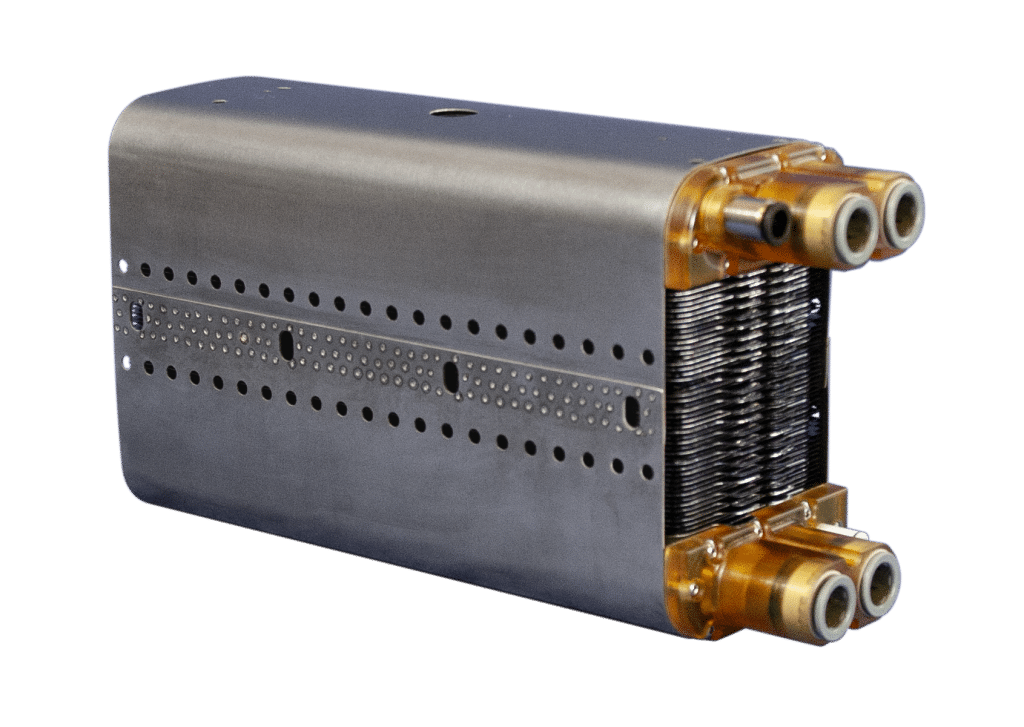Early performance of hydrogen fuel cell prototype has NWUAV looking forward to new wave in drone propulsion
March 11, 2021 | Amy French

Northwest UAV leaders are excited about early test results for a hydrogen fuel cell prototype that have exceeded expectations and that they hope will herald a trend toward hydrogen-powered propulsion in unmanned flight.
NWUAV, in collaboration with the U.S. Naval Research Laboratory (NRL), is developing the proton-exchange-membrane fuel cell with an eye toward what Chief Technical Officer Jeff Ratcliffe called a growing “middle market” between long-range military drone missions that require internal combustion engines and less demanding military and commercial drone use that tends to rely on battery power.
“The promise of hydrogen fuel cells is that they promise to eventually become almost as capable in terms of endurance and power-to-weight ratio as an internal combustion system,” Ratcliffe said. “And if you amortize the cost over the really long life of these things, they could eventually be as cheap or even cheaper than a battery-powered system.”
The hydrogen fuel cell prototype is compact at 6.8 inches by 16 inches, and it weighs only 9.1 pounds. In recent laboratory testing, NWUAV said, it showed itself to have a 360 W/kg power-to-weight ratio and was rated for 1400 watts of continuous power. Other points of pride include a stackable design that makes the fuel cell modular – readily scalable and customizable – for a wide range of aircraft and mission requirements.
The next level of testing – a test flight – is planned for later this year at NWUAV’s FAA-approved test site just outside of McMinnville, Ore.
“This is the most advanced and efficient hydrogen cell ever produced for unmanned systems applications,” said Ben Gould of the U.S. Naval Research Laboratory’s Alternative Energy Section, Chemistry Division.
Military scientists have been researching the potential of hydrogen fuel cells for unmanned aircraft for at least 15 years, Gould noted. But Ratcliffe said NWUAV began taking an active interest in the technology only about five years ago – hoping to create a product that could offer more than just incremental improvements over more prevalent propulsion systems for that middle market.
“The military is a great first adopter for these kinds of new technologies,” Ratcliffe said. “But I think there’s a brilliant and much larger commercial market for this.”
And yet the use of hydrogen fuel cells in unmanned systems, he noted, has only begun to take off.
“I feel like we’re in sort of the Wright brothers days of this technology,” he said. “It has hit a couple of key milestones in the past couple of years, and this (testing) that we just did is another one – pushing power expectations up to some of the internal-combustion capability levels.”
Beyond power, the hydrogen fuel cell offers reliability – largely because of its design simplicity.
“I mean, if you talk about an internal combustion engine, you have roller bearings and cages and push rods and control rods and pistons and all kinds of moving things that move. And each moving thing in a system is an opportunity for failure,” Ratcliffe said. “On a fuel cell, such as the one we’re building, there’s really only a couple of moving parts. That makes them inherently more reliable.”
A potential obstacle to widespread adoption of hydrogen fuel cells is lack of familiarity with the technology.
“People are just kind of mystified by what a hydrogen fuel cell is, how the magic of it works,” Ratcliffe said. “The way to conceive of it is that it’s essentially just another kind of battery … but with the advantages it offers, I feel that it is really going to help enable a lot of the promise of the drone industry to be realized.”
- Industry News


